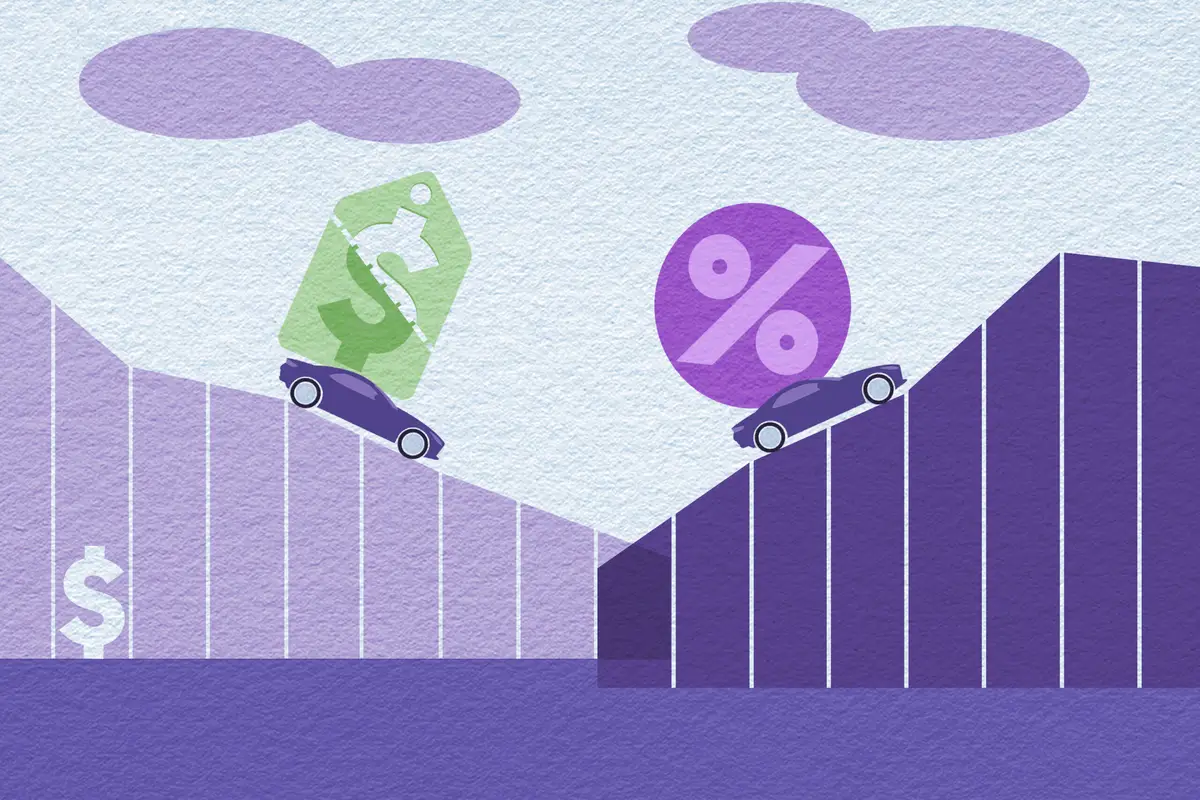High Interest Rates, Fewer Used Cars Make Affordability the Toughest Challenge of 2025


The automotive industry hit an important milestone in 2024, with new-car sales finally back to pre-pandemic levels. However, used-car inventory is nowhere near back to normal yet, and not even an increase in new cars under $30,000 could keep one factor from making affordability a major challenge as we head into 2025: the high cost of financing.
Related: Is Now the Time to Buy Out Your Car Lease?
Cars.com analyzed its data over the course of last year to help get a better picture of what shoppers can expect going in 2025. While there’s a lot of uncertainty still up in the air — particularly when it comes to federal tax credits for electric vehicles and monetary policy — we can at least help explain why certain things are still tougher than usual as we head into the new year.
Signs of New-Car Normalcy
One of the bright spots of 2024 was the news that new-car sales returned to pre-pandemic levels, climbing 2.2% last year to 15.9 million vehicles sold. Inventory has nearly doubled since 2022, when new-car sales hit their lowest point since the Great Recession, and 2024 saw an average of 2.3 million new cars per month. While it’s still going to take years for car sales to return to some semblance of normalcy, these are good signs that relief is on the way.
Last year’s high average list price of $49,175 doesn’t tell the whole story, either. That’s up 29% since 2019, and while it feels like average list pricing has stabilized at just under $50,000 for the past three years, it isn’t cars priced around $50K that are driving it. Inventory of cars priced under $30,000 rose by 63.5% last year, and there was also a 41.9% increase in luxury cars over $70,000, particularly high-end trucks and SUVs.
High Interest Rates Are the Thorn in Everyone’s Side
High interest rates are still keeping many shoppers from accessing much of that inventory, or at the very least, forcing them to consider less expensive cars. Those new-car inventory stats reflect this somewhat, with more affluent shoppers more easily able to afford new cars even when interest rates are high.
Nearly two-thirds of all shoppers have monthly auto loan payments of $600 or more, and 35% of all shoppers now have payments over $800 a month. Compare that to the lower-rate world of 2019, when it was just 35% of all shoppers who paid $600 or more per month on an auto loan. Unfortunately, experts who spoke with Cars.com confirmed that the costs of financing a car will likely remain high for the foreseeable future. You can check out our more in-depth explanation here, but to sum it up, the Federal Reserve tends to cut its interest rate gradually, and it takes a while for consumer-facing interest rates (such as those for auto loans) to catch up.
An Even Worse Year for Used Cars
More bad news: Experts predict 2025 will be the worst year for used-car shoppers since the chip shortage. While the average price of a used car dropped 4.9% last year to $28,819, that price also reflects the number of older, higher-mileage cars that are filling used-car lots. Average used-car mileage hit a record high last year of 60,233, and there’s been an increase in used cars for sale under $10,000 accordingly.
Those looking for a deal on a newer used car are facing the full down-stream effects of the inventory shortage, however. In addition to fewer new cars being made, far fewer were leased during the inventory shortage, and lease returns are a major source of newer used-car inventory. At the height of the inventory pinch in 2022, the percentage of new cars that were leased dipped below 20%, whereas roughly 30% of new vehicles were leased before then.
Used-car inventory overall went down 1.2% year over year, but late-model used vehicles priced $30,000 or higher dropped 13.4%. While there were 15.5 million used cars 6 years old or newer available for purchase at dealerships in 2022, that number shrank to just 11.4 million in 2024 — and it’s expected to bottom out at 10.7 million in 2025.
If you’re looking for a used car and want to have more examples to choose from, look to the period after a major sales season — think the December holidays, Memorial Day or Labor Day — as that’s when more trade-ins flow into dealerships.
Plenty of EVs to Go Around
Right now is a bright spot for one category of cars: EVs. While there’s a lot of uncertainty around the future of federal EV tax credits right now, those tax credits are still there for the taking in the meantime, and there’s lots of new and used inventory to choose from. New EV inventory has grown 64% year over year and 490% since 2022, which combined with an increase in models to choose from, has led to lower prices for EV shoppers.
Even though EVs have a higher sticker price, we still think this is a great time to shop for one. New EVs stayed on dealership lots an average of 85 days in 2024, which is 15 days longer than the average for all new cars last year, suggesting that inventory outpaced demand. Dealerships with extra EVs to sell may be more motivated to cut you a good deal. However, manufacturers may adjust supply to meet the lower demand, so don’t expect the over-supply to stick around indefinitely.
For now, those federal tax credits that can be applied to the cost of the car at the time of purchase can still help consumers who qualify offset some of that cost. The list of eligible new vehicles changes from year to year, but you can check our coverage here to see if the ones you’re interested in still qualify for 2025.
More From Cars.com:
- These Cars Are Discontinued for 2025; Which Ones Can You Still Buy?
- What Are the Best Used Cars for $20,000?
- These Cars Stay on Dealers’ Lots for Longer — And Could Be a Great Deal
- Here Are the 11 Cheapest Electric Vehicles You Can Buy
- Find Your Next Car
Related Video:
Cars.com’s Editorial department is your source for automotive news and reviews. In line with Cars.com’s long-standing ethics policy, editors and reviewers don’t accept gifts or free trips from automakers. The Editorial department is independent of Cars.com’s advertising, sales and sponsored content departments.

Former News Editor Stef Schrader joined Cars.com in 2024 but began her career in automotive journalism in 2013. She currently has a Porsche 944 and Volkswagen 411 that are racecars and a Mitsubishi Lancer GTS that isn’t a racecar (but sometimes goes on track anyway). Ask her about Fisher-Price Puffalumps.
Featured stories




